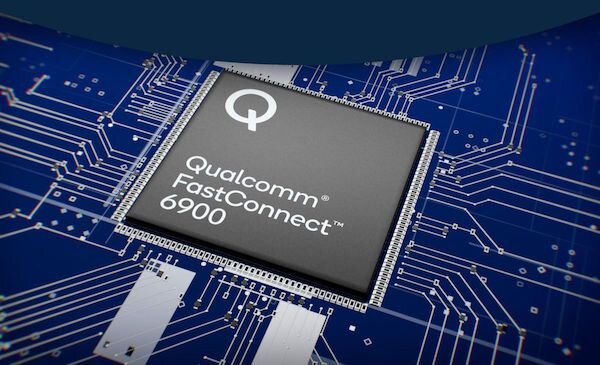What Does the Wi-Fi 6E Boom Mean for Future Devices?
/Commercial players and consumers have gradually embraced the zippy Wi-Fi 6 standard since its unveiling. The promising upgrade promises faster connection speeds and improved performance in congested areas.
However, recent FCC bandwidth allocations of 1,200MHz have facilitated yet another advancement: Wi-Fi 6E. This modern protocol aims to help network connectivity transcend existing limitations. However, proper hardware integration is central to realizing that goal. How are device makers and electrical engineers responding?
How does Wi-Fi 6E work?
While Wi-Fi 6 brings immense benefits—including 40%+ speed improvements over Wi-Fi 5, and congestion mitigation—it remains an imperfect solution. Network connections occur over chunks of the wireless spectrum dubbed “channels.” Unfortunately, there’s only about 400Mhz of bandwidth that channels may simultaneously share.
As if that weren’t enough—as far back as 2015, experts estimated that 127 devices were added to the internet every second. Internet-enabled devices are only becoming more ubiquitous with time.
Additionally, it’s expected that over 75 billion IoT devices will be active by 2025. Each user can therefore eek out limited performance from our devices, considering even localized demand. We’ve reached our ceiling.
New Connectivity Benefits
That extra 1,200Mhz of bandwidth will be a godsend for newer devices. Since Wi-Fi 6E utilizes the 6GHz band’s added elbow room, compatible devices should perform faster with greater consistency—achieving or besting fiber optic network speeds. Latency also plummets.
We’re effectively quadrupling our networking bandwidth in two distinct ways—as 1,600MHz of total bandwidth is now available, and because 160MHz channels are replacing their 40MHz predecessors.
Some other attractive features include:
Target wake time (TWT) improvements – for improved battery life, allowing devices to sleep more often
1024-QAM – for encoding more data at a given spectrum than previous solutions
Transmit beamforming – for higher data rates and network capacity
Those battery life gains are crucial. Today’s devices are mobile, and consumers often lack access to charging on the go. Designers know this. The onus is on them to extract every minute of battery life possible on a single charge. Thanks to Wi-Fi 6E, designers won’t have to compensate for yet another power-sapping feature.
As with Wi-Fi 6, routers can split channels into subchannels for better load management. Connected devices won’t bog each other down. Multi-user MIMO (MU-MIMO) will allow simultaneous connections AND responses between devices and access points. Early adopters also won’t face competition from other users.
New Wi-Fi 6E electronics can’t baselessly claim compatibility. The Wi-Fi Alliance, a global governing body, must officially grant devices the Wi-Fi Certified 6 designation. However, packaging doesn’t have to display Wi-Fi 4, 5, or 6 labeling. The Wi-Fi Alliance recommends that manufacturers add this for greater transparency.
For these reasons, Wi-Fi 6E isn’t a simple rebrand. It constitutes a new frontier for connectivity with measurable, positive impacts for consumers and engineers.
Potential Drawbacks
No technology is perfect, despite its advantages. Wi-Fi 6E suffers from the pitfalls of 5Ghz Wi-Fi: shorter range. It’s necessary to be closer to an access point, or ensure that router is more centralized. EEs must work to mitigate these issues by beamforming more effectively, or improving antenna designs.
Naturally, centralization always possible in larger homes or buildings. Due to poorer signal penetration, Wi-Fi 6E mesh routing may not be so practical (depending on the construction of a given structure).
Higher-frequency signals—at lower energies, like those emitted from routers—also don’t pass through solid objects as readily. Maintaining line of sight is essential for achieving optimal performance. Telecoms are currently facing similar challenges with urban 5G deployment.
Because the protocol is newer, it hasn’t yet become ubiquitous on the market. Fewer Wi-Fi 6E products means less competition, which typically incentivizes higher pricing. These costs also rise since special components are needed to enable complete functionality—like multiple router antennas and bands.
Operating in 6E Mode
Wi-Fi 6E connectivity has two-way requirements. One’s phone and router, for example, must both be Wi-Fi 6E compatible to enjoy the technology’s core features. Otherwise, Wi-Fi connections will default to either the 2.4GHz or 5GHz bands.
That said, compatibility is primarily hardware driven. Routers require additional antennas to allow for MU-MIMO. These devices need Wi-Fi chips of their own. Phones and tablets require the same. These come either standalone or packaged as part of a Wi-Fi/Bluetooth SoC (as seen in some iPhones).
Laptops will require a specialized card to achieve this functionality. It’s also possible that we’ll see accessories, like D-Link’s Wi-Fi 6 USB Adapter, hit the market in the coming months. Whatever the case, engineers must choose chips that support the 6G band in its 1,200MHz entirety—atop our existing 400MHz spectrum.
Cellular modem makers have done the same as they’ve enabled 3G, 4G, and 5G. Backwards compatibility with older bands is essential. Wi-Fi 6E devices won’t be widespread for some time, and may take months to hit shelves.
What Wi-Fi 6E Hardware Exists Now?
Each passing week brings the launch of new hardware, or development efforts. The 2021 Consumer Electronics Show (CES) has served as a launchpad for some promising Wi-Fi 6E routers (and systems):
TP-Link’s AX7800 Whole Home Mesh WiFi 6E System and Archer AX96 Tri-Band Router
TP-Link’s AX5400 Whole Home Mesh WiFi 6E System with Smart Hub
These offerings support all three Wi-Fi bands: 2.4GHz, 5GHz, and 6GHz. Mobile device makers won’t have to bend over backwards to ensure compatibility—as these products support all Wi-Fi 4+ devices.
These routers do require special components, however, to support Wi-Fi 6E. Beefed up processors are necessary. Because these routers support demanding tasks like 4K/8K streaming or gaming, their CPUs must support such tasks effectively. Antennas come pre-optimized for easy setup and better performance.
Chipsets
Intel’s AX210NGW modem hit the market as one of the first available Wi-Fi 6E modules. Since then, other fabricators have followed suit.
Broadcom was the first to offer a mainstream Wi-Fi 6E chip: the BCM4389. The chipset is an SoC that integrates Bluetooth functionality. It includes two main Wi-Fi radios and a third radio, that’s both battery and performance optimized.
This chipset resides within Samsung’s Galaxy S21 Ultra—which recently became the world’s first Wi-Fi 6E smartphone. The company regular sells over 8 million devices annually. Broadcom’s chips will likely power tens of millions of other devices.
Since then, Qualcomm has introduced two similar chips: the FastConnect 6900 and 6700. Each promises speeds in excess of 3Gbps. Each chip is designed to maximize performance and load management when multiple devices are simultaneously connected to a given network. For this reason, Qualcomm’s offering is ideal for next-generation 6E routers.
The good news is that these companies are accustomed to manufacturing tens of millions of chips for product-release cycles. Companies are in a good place to meet demand—especially as COVID’s impacts on production subside.
The Future of Wi-Fi 6E
Wi-Fi 6E’s future depends on a number of factors. Will the technology live up to the hype? Will regulators in other regions, like Europe, free up 6G bandwidth? How will the architecture of 6E chips affect their design and production—if at all? A number of questions remain, but industry professionals have reasons to be optimistic.
Of the 338 million Wi-Fi 6 devices entering the 2021 market, analysts expect roughly 67.6 million to support the 6E standard by 2022. The same group believes that a number of supporting chipsets will emerge during that period. There will be huge demand for these devices. This transition period will also give engineers a chance to work out any design kinks.
To prevent Wi-Fi 6E from becoming the Windows Vista of wireless standards, it must deliver excellent performance. Production and design challenges must be overcome. Companies also need to buy into the technology en masse. Coupled with the evolution of WPA3, Wi-Fi 6E remains an exciting new tool for engineers to utilize.







